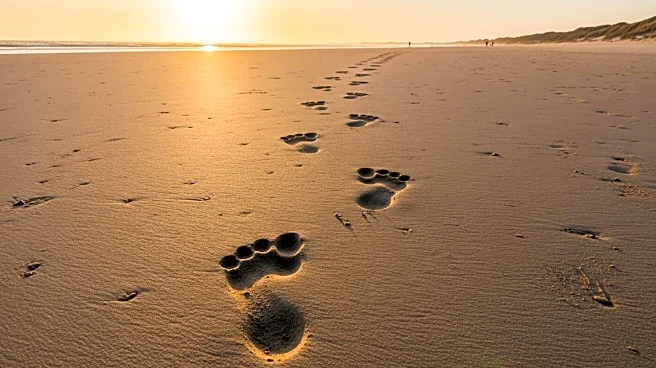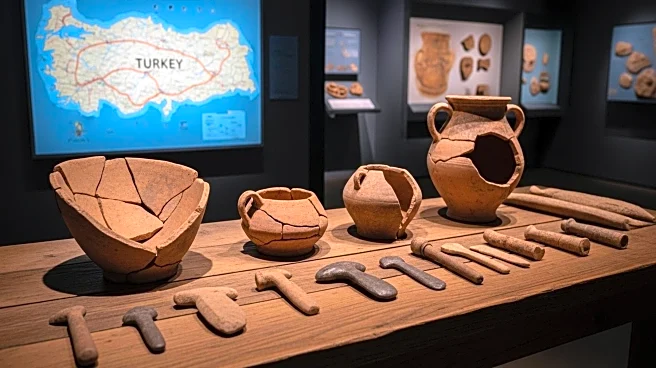What's Happening?
A recent study conducted by researchers from Düzce University, Hacettepe University, and the University of Ankara has proposed a new theory regarding the migration paths of early humans from Africa to Europe. Traditionally, it was believed that early humans traveled from Anatolia to Europe via a land corridor south of the Black Sea, known as the Marmara-Thrace corridor. However, the study, published in the Journal of Island and Coastal Archaeology, suggests that early humans may have crossed a land bridge that existed in the Aegean Sea during periods of low sea levels. This hypothesis is supported by the discovery of Acheulean stone tools, associated with Homo erectus, in Ayvalık, Turkey, indicating that early humans might have used this now-submerged route to reach Europe.
Why It's Important?
This new understanding of early human migration routes could significantly alter the historical narrative of human dispersal from Africa to Europe. The findings challenge the long-held belief that early humans only used the Marmara-Thrace corridor, suggesting instead that multiple routes were possible. This has implications for the study of human evolution, as it may lead to a reevaluation of the timeline and pathways of human migration. The discovery of stone tools in Ayvalık also highlights the potential for further archaeological exploration in the region, which could uncover more evidence of early human activity and migration patterns.
What's Next?
The study opens up new avenues for archaeological research in the Aegean region. Future excavations and surveys could provide additional evidence to support the theory of the Aegean land bridge as a migration route. Researchers may also explore other potential routes that early humans could have taken, further expanding our understanding of human migration. The findings could prompt a reexamination of existing archaeological sites in the region to identify similar artifacts that might have been overlooked under previous assumptions.
Beyond the Headlines
The study's implications extend beyond archaeology, touching on broader themes of human adaptability and resilience. The ability of early humans to navigate and adapt to changing landscapes and climates speaks to the ingenuity and resourcefulness of our ancestors. This research also underscores the importance of interdisciplinary collaboration in uncovering new insights into human history, combining geological, archaeological, and environmental studies to paint a more comprehensive picture of the past.











